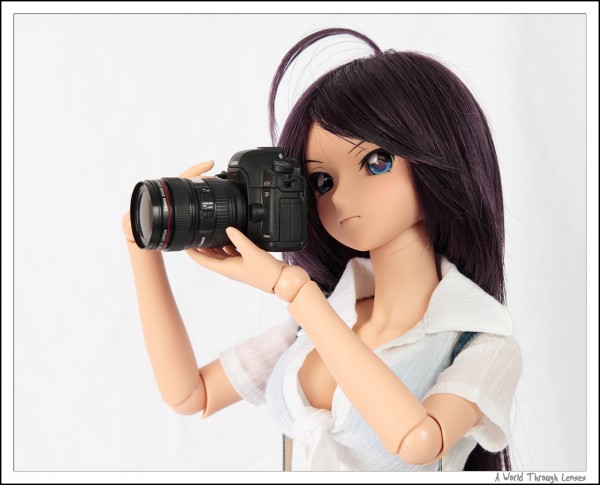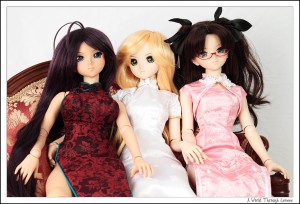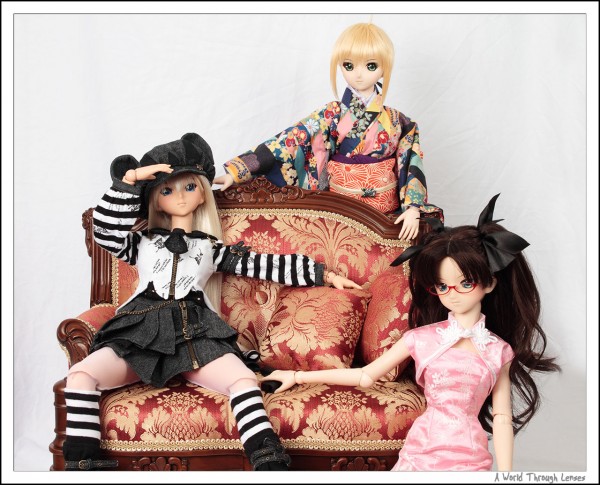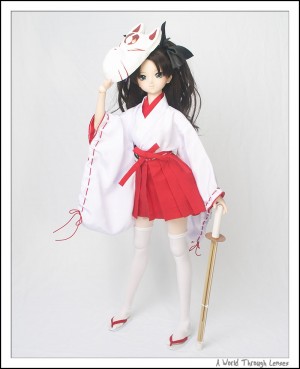This is another one of my figure/doll photography 121 post. A few months ago, I’ve posted an article on how to produce a true black background without the use of any black background material and/or image editing software. I wrote about the black background because I find most people does not know how light works its magic in a photography sense. The people I talk to tends to instinctively come to the conclusion that if a photo’s background is black, then there must be something black behind it. If you have read my article, then you would see that a true black background actually resulted from a lack of light coming towards to your camera. Today I want to look at the opposite side of the gray scale — how to produce a white background?
Well again a lot of people instinctively think that a white background is the result of placing some kind of white material behind the subject. Below is a photo that I took in front of a white fabric backdrop. However, when compared to the white frame that borders the picture, you can clearly see that the actual background is not 100% white. In fact if you load it into an image editing software, you will see that the background is somewhere between 96% – 92% on the gray scale. On the gray scale there’s only one white point which is at the very end of the gray scale. Anything that’s not 100% on the gray scale, or 255, 255, 255 in RGB value is not pure white. And 255, 255, 255 RGB value is what the background must be if we were to call it a true white background. Anything less is just a different shades of gray.
Continue reading ‘Figure/doll photography 121 – How to produce white background’ »






